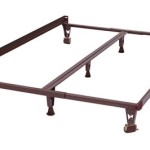At What Age Do You Move A Child From Crib To Bed?
Transitioning a child from a crib to a bed is a significant milestone in their development. There's no one-size-fits-all answer, as the ideal time varies depending on individual needs and circumstances. While some children exhibit readiness signs earlier than others, understanding the typical developmental stages and recognizing key indicators can help parents make informed decisions.
Chronological age provides a general guideline, but it shouldn't be the sole determining factor. Most children make the switch between 18 months and 3.5 years old. However, focusing solely on age can lead to premature transitions, potentially causing sleep disruptions and safety concerns.
Physical development plays a crucial role in determining readiness. A primary indicator is a child's height. If they can easily climb or fall out of the crib, it's a clear sign they've outgrown it, regardless of age. This poses a significant safety risk, making a transition necessary to prevent injuries.
Developmental milestones offer further clues. A child demonstrating increasing independence, such as expressing a desire for a "big kid bed," or showing signs of potty training, may be ready for the change. These milestones often coincide with a child's cognitive and emotional development, indicating a growing sense of self-reliance.
Upcoming life changes can also influence the timing. The arrival of a new sibling, for example, might necessitate moving an older child to a bed to make room for the baby in the crib. While this can be a practical consideration, it's important to handle the transition sensitively, ensuring the older child doesn't feel displaced or resentful.
Behavioral cues can provide valuable insights into a child's readiness. Consistent attempts to climb out of the crib, even after parental intervention, suggest a need for a larger sleeping space. Similarly, expressing discomfort or unhappiness in the crib can indicate that the child has outgrown it, both physically and emotionally.
Creating a safe and comfortable sleep environment is paramount when transitioning a child to a bed. Lowering the bed frame to the lowest setting minimizes the risk of falls. Installing guardrails on the sides of the bed provides an added layer of security, especially for children prone to rolling around in their sleep.
Maintaining consistent bedtime routines is crucial for a smooth transition. Familiar routines, like bath time, story time, and quiet playtime, help signal to the child that it's time to wind down and prepare for sleep. This consistency provides a sense of security and helps maintain healthy sleep patterns.
Addressing potential challenges proactively can ease the transition process. A child might initially resist staying in their new bed, repeatedly getting up or calling out for parents. Establishing clear expectations and responding consistently to these behaviors can help reinforce boundaries and encourage the child to remain in bed.
Positive reinforcement plays a vital role in encouraging the desired behavior. Praising the child for staying in their bed and offering small rewards can motivate them to adapt to the new sleeping arrangement. This positive reinforcement builds confidence and reinforces the positive association with the new bed.
Patience is key throughout the entire process. The transition may take time, and setbacks are normal. Some children adapt quickly, while others may require several weeks or even months to adjust fully. Understanding and accepting this variability can help parents maintain realistic expectations and provide consistent support.
Preparing the child for the transition can significantly ease the process. Talking to them about the change, explaining the reasons behind it, and involving them in choosing bedding or decorating their new sleeping space can foster a sense of excitement and ownership, making the transition a positive experience.
Considering the child's temperament and personality can also inform the approach. A child who is generally adaptable might transition easily, while a child who is more sensitive to change might require more gradual adjustments and reassurance. Tailoring the approach to the individual child's personality can significantly contribute to a successful transition.
Consulting with a pediatrician or child sleep specialist can provide personalized guidance. These professionals can offer tailored advice based on the child's individual needs and developmental stage, addressing specific concerns and offering strategies to navigate potential challenges effectively.
Ultimately, the decision of when to move a child from crib to bed is a personal one. By considering the child's physical and developmental readiness, creating a safe and supportive sleep environment, and maintaining consistent routines, parents can facilitate a smooth and positive transition, fostering healthy sleep habits for their child.

How To Move Your Child From Crib Toddler Bed Safely

When To Transition From A Crib Toddler Bed

10 Best Tips For Transitioning From Crib To Bed Busy Toddler

Transitioning Your Toddler From Crib To Bed 2024 Lucie S List

When Should Your Baby Make The Transition From Crib To Toddler Bed Parachute Blog

When To Transition A Toddler Bed

What Age Should Your Child Move From A Cot To Bed Room Grow

How To Move From A Cot Bed Toddler Cuckooland

How To Transition Your Toddler A Floor Bed Outsidethetoybox

When To Move Baby Own Room Babywise Mom







